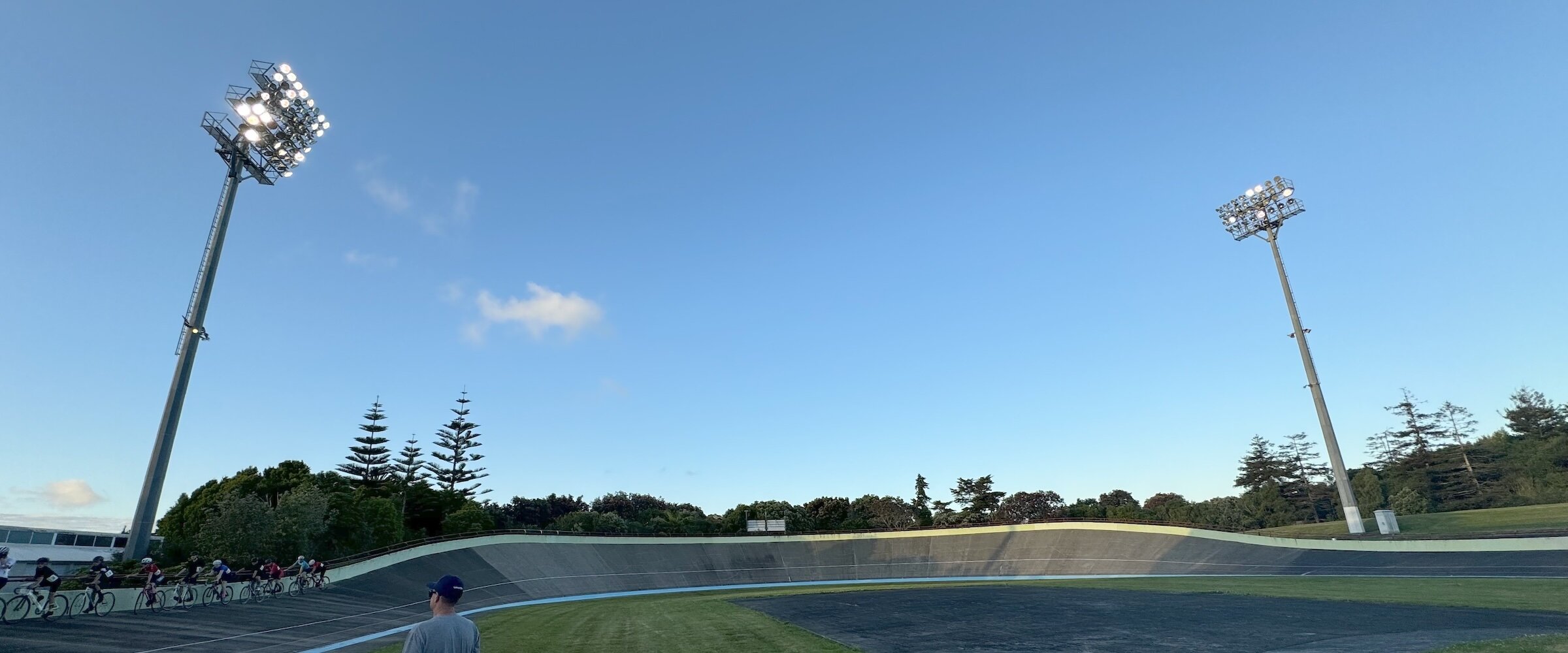The Manukau Velodrome is a 285m concrete oval with 42 degree banked turns. It was originally built in 1989, in preparation for the 1990 Auckland Commonwealth Games. In addition to the Games, the Manukau Velodrome has held several National Track Cycling Championships.
Auckland Track Cycling is based at the Manukau Velodrome though the summer months and the Grassroots Trust Velodrome in Cambridge from time to time during the year. The summer season runs from October to approx March, with plenty of events on each week.
SEE THE CALENDAR FOR WHAT'S COMING UP. Throughout the year we also train and take part in events in Cambridge, as well as Invercargill. Some riders also compete internationally.
It is important to note, we only ride at Manukau Velodrome when the weather is fine, if it rains/or is highly likely to rain there will be cancellation notices posted on the AUCKLAND TRACK CYCLING FACEBOOK page, generally by 4pm during the week, and by around 8am on weekends.
In General:
Velodromes vary around the world, but in general tracks are oval-shaped with banked turns, providing spectators with an amazing view of the speed and excitement of the sport. Velodromes can vary in length, ranging from less than 200 meters with steep banking to over 450 meters on outdoor concrete tracks. However, Olympic-standard velodromes must be 250 meters long, completely covered, and made of wood.
The markings on the velodrome:
The apron of the track is a flat paved area, adjacent to the racing surface of the velodrome. It is used as a transition for getting on and off the track. It is also used as a safety buffer during races, giving the riders a place to exit the track if they have a mishap, such as a flat tire.
The track markings:
- The cote d'azur or blue band at the bottom of the track is located at the transition area between the apron and the banking. This blue area is out-of-bounds and represents the inside edge of the track for normal racing.
- The line above the track is black and is used for measuring the track. It is sometimes referred to as the pole line, but the racing surface actually extends 20cm down to the blue band. This line is also known as the pursuiting line because riders in this event will attempt to follow it as it represents the shortest distance around the track.
- The sprinter's line is the line above the black pole line on the track. It is used to mark the sprinter's lane, which is the area between the black and red lines. This helps ensure safe sprinting on the track. There are specific rules for track racing that govern the use of the lane. Generally, the first rider to enter the lane during a sprint is given possession of it. No rider can pass on the inside of this rider, and any rider attempting to pass on the outside must stay out of the lane. Once the lead rider is in the lane, they cannot leave it if someone is next to them.
- 3 meters above the blue band is another blue line known as the stayers line. This line was initially utilized in motor-paced races, where the cyclists were required to remain behind their motorcycles, which were referred to as stayers. The leading stayer was obligated to ride on the stayers line. During warm-up and training sessions, slower riders are expected to stay above this line, reserving the lower part of the track for fast training.
- The finish line for massed start events, such as points race, sprints, scratch, madison, elimination, is located on the home straight just before the first corner. In the middle of each straight, there is a red starting line that is used for timed events. The Kilo and 500m TT, Pursuits, and team events like Team Pursuit and Team sprint all make use of these lines. The fourth line is the red 200m mark, which is used to time sprints. This line is positioned 200m from the finish line and is located at the beginning of the back straight.


